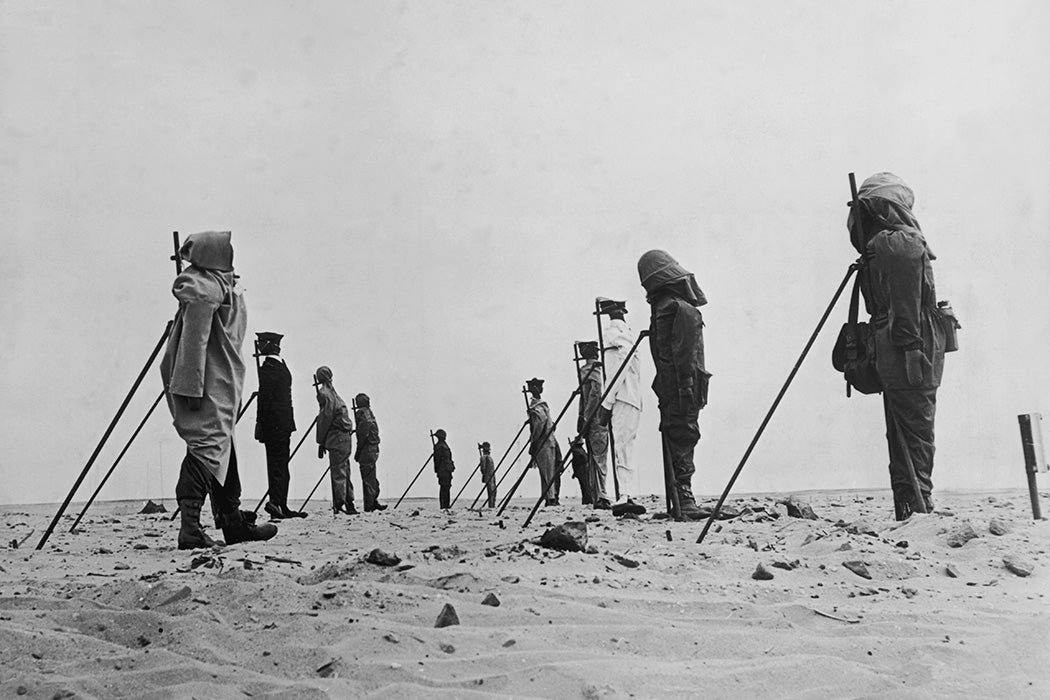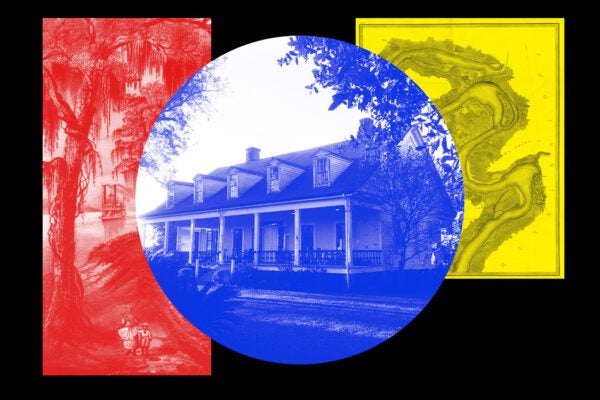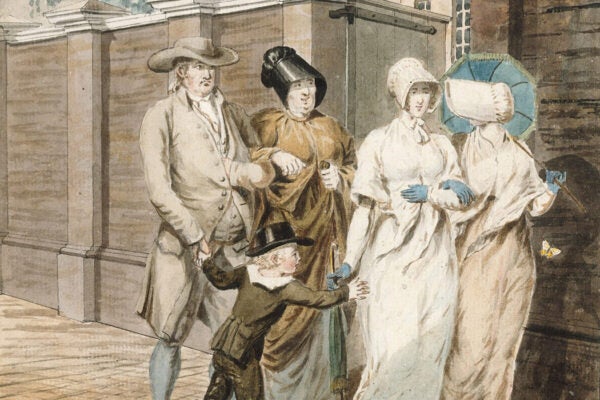In February 1960, France became the fourth nation after the United States, the USSR, and the United Kingdom to become a nuclear power. They did this by detonating a 70- kiloton atomic bomb at Reggane in the Sahara Desert. Code-named Gerboise Bleue, this was the first of four atmospheric tests done in the midst of the Algerian War—in territory that became part of an independent Algeria in 1962.
French history has typically segregated the war in Algeria from the simultaneous nuclear tests in Algeria. “Political, military, journalistic, and scholarly articles have tended to narrate these phenomena in parallel, with limited interaction between their storylines,” writes historian Roxanne Panchasi, who argues these things should more accurately be tied together.
“[The] persistent disconnect between the contested space(s), acts, and victims of France’s nuclear weapons tests from the contested spaces(s), acts, and victims of the Algerian War,” Panchasi explains, “reproduces the historical disavowal of the belligerence and violence of both the bomb, and what the French state referred to obliquely for decades as its ‘operations for the maintenance of order in North Africa.’”
During the Algerian War (1954–1962), France officially referred to the conflict, which pitted France and the French Algerian colony against an anti-colonial Algerian independence movement, as les évènements, “the events.” The French government wouldn’t officially call it a war until 1999.
In the year preceding Gerboise Bleue, African and Asian nations bitterly protested French plans for nuclear testing in the Sahara. They both challenged French claims to the Sahara and connected the “Question of Algeria” with what they saw as a blatantly colonial A-bomb test. Though the French government described the testing area as devoid of people, tens of thousands would be affected by the fallout, which spread much farther and in higher levels than admitted officially. French troops were also exposed in the tests to see how they would respond to a nuclear battlefield—another legacy largely ignored until recently.
More to Explore
Close Calls: When the Cold War Almost Went Nuclear
Just before Gerboise Bleue, an international Sahara Protest brought anti-nuclear and peace activists together to journey to Reggane, but the French military prevented them getting there. American pacifists and civil rights activists A. J. Muste and Bayard Rustin were part of that group.
Panchasi describes the French bomb as “always a weapon in and of empire.” Decolonization was a major impetus for the French investment in nuclear weapons, a show of power in the face of retreat from Indochina and elsewhere. Joining the elite A-bomb nations would restore France to its former “grandeur.” Charles de Gaulle, president of France from 1959 to 1969, certainly saw it that way; his announcement for first Sahara test was, “Hurray for France! From this morning, she is stronger and prouder.”
One of the strongest voices against a French test at Reggane, President Kwame Nkrumah of Ghana, responded, “My government has learnt with horror that the Government of France, in total disregard of repeated protests by Ghana and other African States, and of the Resolution of the General Assembly of the United Nations, has defied the conscience of the mankind and has this morning exploded a nuclear device on African soil.”
The last atmospheric test at Reggane was Gerboise Verte, on April 25, 1961, right in the midst of the “Revolt of the Generals,” a putsch attempt led by retired French generals attempting to undermine the French government’s negotiations with the FLN, the Algerian National Liberation Front. Some have argued that the timeline for this detonation was accelerated as an intentional “scuttling” of the device so that it wouldn’t fall into the hands of the mutineers.
Weekly Newsletter
The French then moved their bomb tests underground to In Ekker, further east in Algeria. Thirteen tests were made there before the end of 1966. The 1962 treaty that ended the Algerian War, 132 years of French colonial rule, and the last bastion of European settler-colonialism in North Africa contained an agreement to let France continue with underground testing until 1968. Once in power, however the new government of Algeria broke that agreement. The French were forced to move their atomic testing—but they didn’t take it to France. They went to the Pacific, where between 1966 and 1996, 193 more weapons would be tested at the Moruroa and Fangataufa atolls in Polynesia—not without controversy, and also resulting in a continuing toxic legacy.
Gerboise Bleue, the world’s first atmospheric nuclear test in over a year, inaugurated something of an orgy of atmospheric nuclear testing by the Soviet Union and US during the next few years. These assaults on the biosphere were halted by the Partial Nuclear Test Ban Treaty of 1963. The French weren’t signatories of that treaty: they carried out forty-six more atmospheric tests in the Pacific before moving underground.








